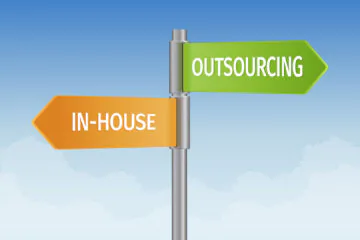91% of production companies say that the Producer Offset is “critically important” to their business.
The offset is a vital source of funding for Australia’s moving image production industry. Since it was introduced in 2007, it has paid out more than $1.5 billion in rebates on more than 1000 projects.
What is the Producer Offset?
Screen Australia administers the offset. But it’s not like other funding that’s contingent on availability, (with competition for limited budgets). The Producer Offset is grounded in tax legislation. It works as a rebate paid from the ATO. This means that although you need to come up with the finance for your project upfront, there is an assured source of funds on completion. So you can count on it when you’re planning your production. It’s money in the bag.
The Producer Offset is one of three offsets that form the Australian screen production incentive. The Location Offset is intended to entice large scale overseas productions to Australian shores. And the PDV Offset is for Post, Digital and Visual Effects. But the Producer Offset is distinct in that it is designed to help Australian producers retain equity in local productions. And it’s working.
98% of companies in the television/streaming sector retained all of their Producer Offset equity. More feature film producers traded their equity. But the majority retained at least half of their equity stake.
Retaining equity is important because it means producers are in line to generate revenue from a production once it goes into profit.
How does it work?
At the heart of the offset legislation is QAPE – Qualifying Australian Production Expenditure. QAPE is the component of the production budget spent within Australia. Firstly, a production needs to reach a certain level of QAPE expenditure before it qualifies. And then the rebate amount is calculated as a percentage of QAPE.
Who’s eligible and how much can producers get back?
Qualification for the Producer Offset is on a production-by-production basis. Eligibility depends on format, distribution method and total eligible expenditure. Screen Australia assesses and issues eligible companies a final certificate so that they can claim the offset. Here’s a summary (although there are nuances to each production and if in doubt clarify with Screen Australia):
Who qualifies?
The production needs to:
- Meet or reach the QAPE threshold of $500K (for feature, single episode drama and documentary, other formats vary)
- Be finished
- Have significant Australian content (or be an official co-production)
- Be of an eligible format or genre
The company needs to:
- Be either an Australian resident or have a permanent establishment in Australia.
- Claim the tax offset in its tax return for the year in which the film was completed
Rebates for eligible formats
- 40% Offset
- Feature films distributed via theatrical release
- 20% Offset
- For feature films distributed any other way (e.g. TV, SVOD, other online)
- For any format other than ‘feature film’ (e.g. TV series, documentaries, animation series)
Exclusions and caps
- Infotainment, lifestyle or magazine-style programs are not eligible
- There’s a cap of 65 commercial hours of content on any production. This mostly affects successful TV series as you run out of hours eventually and so costs can go up by 20%.
Can I claim archive expenses?
In 2011, the offset legislation was updated to cover media archive – but only during production and post-production. You can claim archive and storage up until the end of the last financial year of production. So protection for your project (already a small fraction of the budget), is even more affordable.
It does, however, mean that you need to plan for the expense upfront. Screen Australia provides budget templates to help with the planning stage. They’ve included line items for storage and backup. Find the templates here.
In our experience, streaming companies like Netflix are now asking for long-term archive as part of distribution deals. So planning ahead can only be a good thing. (We’ve provided 15-year archive terms with a content accessibility guarantee to help clients in this situation.)
The good thing is, if you’re prepared, you won’t get caught holding the tab for storage at the end of production.
Example scenarios of how QAPE applies for media archive
Please note that we provide the following examples as a general guide only, based on our understanding of QAPE requirements. Screen Australia assesses each production on a production-by-production basis. Producers should always contact Screen Australia for clarification.
5-year archive package, stored from project completion: A production is completed in January 2020 and sent to archive for storage until December 2024.
- QAPE eligibility is limited to the six months January to June 2020. (The financial year of production – in this example it pro-ratas to 10% of the total package.)
Documentary in progress: A company films a documentary over a 12-month period, sending us footage as they shoot.
- The storage for that footage across the 12-month period is eligible for QAPE.
- If they go straight into post-production, storage for the period of post-production is also eligible for QAPE.
- However, if there is a gap between production and post-production (eg while sourcing additional funding), storage during that period is not eligible for QAPE, since the film is not actively in development.
Project on hiatus: A company films for 3 months, then stores footage for 9 months and goes back and films ‘1 year later’ footage, then goes into post-production.
- QAPE eligible during production and post-production. But this doesn’t include the period of 9 months where no active filming is taking place.
What does the future hold for the Producer Offset?
The day before the Federal election was called, the government announced an extension of the Location and PDV Offsets. TV and mini-series distributed through online platforms are now eligible. This brings them into alignment with the Producer Offset. According to the government, this move “will ensure the industry can capitalise on opportunities and attract more investment.”
While welcomed by some in the industry, many see the changes as a missed opportunity. The Make It Australian campaign points out that, unlike the Producer Offset, the other offsets do not stipulate significant Australian content.
The campaign calls out policy inaction in the face of a growing number of government inquiries.
“The Government’s response has been lacklustre with no tangible outcomes to support local production.” (Read the full statement here)
We found 8 out of 10 content creatives supported lifting of the Producer Offset rebate to 40% for all formats and distribution methods.
However, if past behaviour is the best predictor for future behaviour, then we’re unlikely to see large-scale changes anytime soon.
Consider archive in your production budget
Budgeting for archive means that you don’t have to skimp on protection for your production. You can also make sure you don’t miss out on any potential funding. And you won’t be left with the tab when the project is done and dusted.
Want to get an idea of pricing? Get in touch to see our project rates or receive a tailored quote.
We encourage producers to contact Screen Australia for specific queries regarding the Producer Offset and QAPE.





